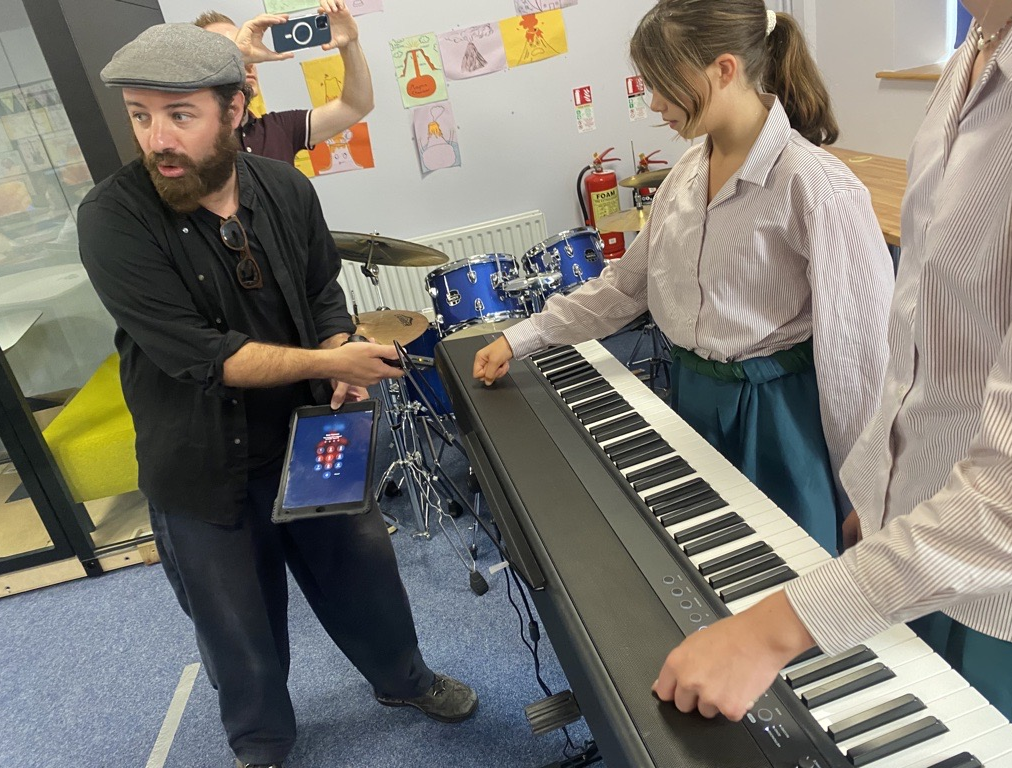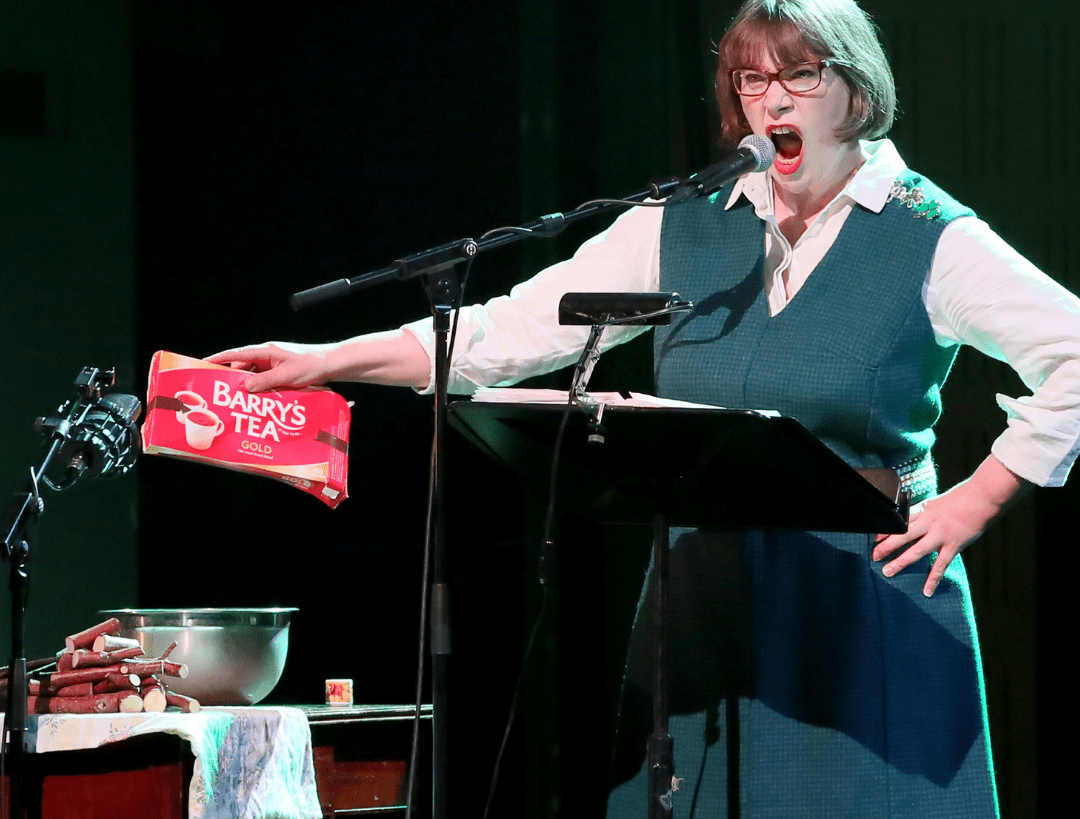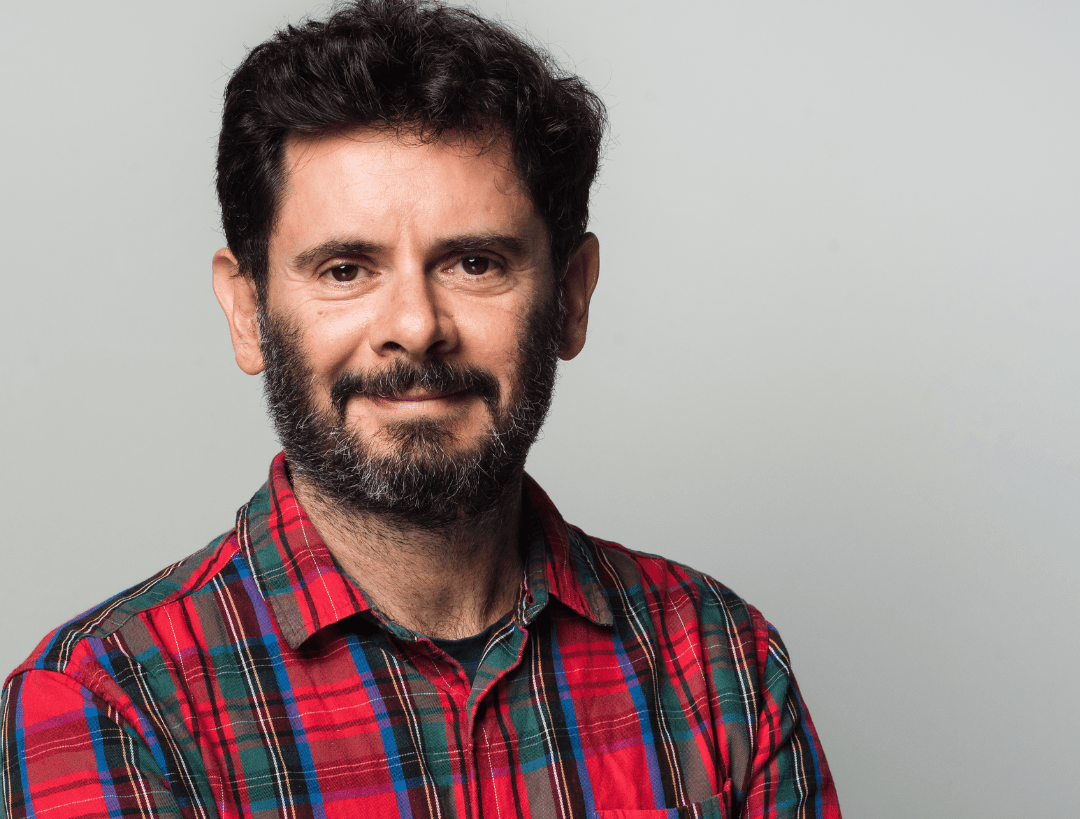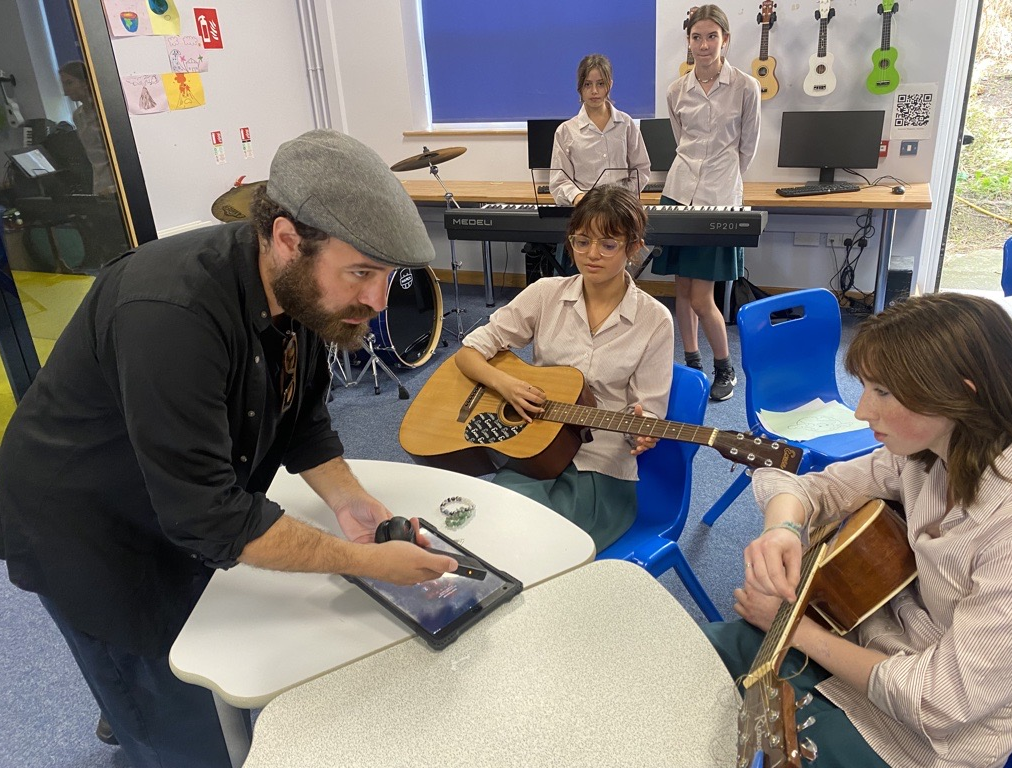After a brief introduction setting the mood for the evening, the performers draw our attention to the electromagnetic field (EMF) that pervades our environment. The EMF is responsible for light and electricity, and says Walshe, it ‘is like living in an invisible dance party made of electricity and magnetism that surrounds us all the time’. The performers use the Ether microphone, created by the company Soma, to translate the signals in our everyday environment – radio frequencies, phones, computers – and make them audible and indeed musical through a Bluetooth speaker. Walshe has in the past collected sounds from around the country: the hum of phone masts in Leitrim, or the hissy crackle of data cables at Ross beach in Mayo. During Oscailt, the performers seek out EMF sounds within the venue, making each performance a unique site-specific event. Roth’s saxophone’s drone melds with the EMF sounds, and Ghikas and Walshe digitally manipulate the results.
In the next section, we learn of the Irish Prehistoric Internet. Thousands of years ago, it connected the mountain Sliabh an Iarainn in Roscommon to distant nodal points like Knocknarea in Sligo. But how did it work? Alongside this story, sounds are excavated of our more recent ancient computer world: Nokia ringtones, floppy disk scans, Windows ‘95 log-on jingles.
The cutest and most profound medium of them all is, of course, the cat. Now, the cat becomes our avatar for learning about artificial intelligence and machine learning. In her recent groundbreaking composition A Late Anthology of Early Music, Walshe, collaborating with machine learning specialists CJ Carr and Zack Zukowkski, trained the neural network Sample-RNN with hours of her voice singing, then mapped the results onto the evolution of Western classical music from Ancient Greece to the Renaissance. Here, the topic of machine learning is explored visually, musically and in feline ways. Sampled kitty-sounds abound.








